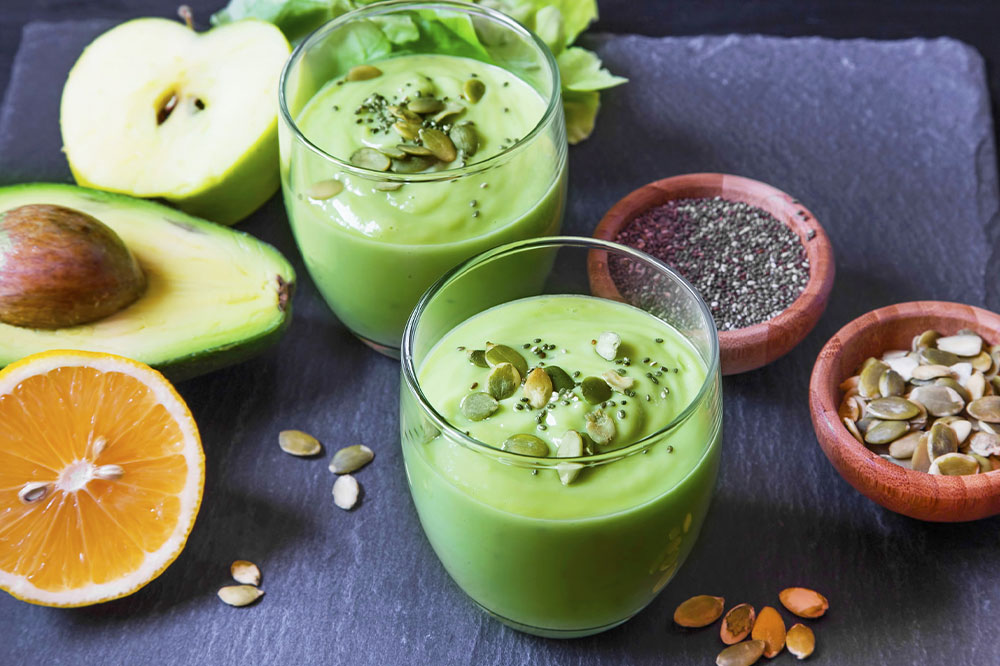8 Homemade Smoothies to Manage Arthritis

People with arthritis may suffer from a range of diseases or pains in the joints of their bodies. The pain caused by the condition can also be debilitating, which may force most individuals to refrain from carrying out indoor or outdoor tasks. Besides the treatments, one can eat certain foods that may help manage or improve the symptoms of arthritis. They can also blend these nutritious options to create healthy smoothies and make their meal enjoyable.
Turmeric-infused smoothie
Turmeric is traditionally used in several foods to manage health conditions. As for arthritis, the spice contains a substance known as curcumin that may help curb the effects of osteoarthritis and rheumatoid arthritis, including pain and inflammation in the joints. To make a turmeric-infused smoothie, one will need a handful of kale or spinach, ½ cup of frozen pineapple chunks, one teaspoon of turmeric, and a quarter spoonful of ginger. They need to blend these ingredients with a pinch of black pepper, a spoon of chia seeds, and one cup of low-fat milk or almond milk.
Pineapple smoothie
An individual with arthritis may benefit from eating pineapples because of their pain-reducing enzymes like bromelain. All one requires to turn the fruit into a healthy smoothie are two celery ribs, the head of romaine lettuce, some coriander, a thumb-sized piece of ginger, and half a pineapple. The individual must pulse the ingredients in a blender and gradually top it with water until it achieves a consistency of their liking. Drinking a pineapple-based smoothie may help tackle the symptoms of arthritis, including pain and inflammation.
Blueberry kale smoothie
While kale contains healthy properties to manage the symptoms of arthritis, not everyone might enjoy eating the leafy green during meals. So to help make the dish more interesting, one could combine it with blueberries to create a healthy and delicious smoothie. First, one must collect three-quarters of blueberries, a cup of kale, one banana, two pitted dates, and half a tablespoon of almond butter. Throw these ingredients into a blender and top it up with low-fat or almond milk until it reaches the ideal consistency of one’s choosing. After this, all they need to do is pour the concoction into a glass and enjoy.
Vanilla matcha “green tea” smoothie
Popular as a powdered green tea leaf, matcha contains antioxidative properties that may tackle inflammation and curb the breakdown of cartilage in the body. By itself, the ground powder may not be very attractive to drink. But one could turn it into a delicious smoothie along with other ingredients in the mix. They will need a scoop of vanilla protein powder, one banana, half a teaspoon of honey, a fresh vanilla bean extracted from an inch of a pod, and two teaspoons of matcha green tea powder. All they need to do now is blend the ingredients with low-fat milk or almond milk to create a nutritious drink that may help improve their symptoms of arthritis.
Celery-ginger smoothie
To make this healthy drink, one will require ingredients, including one cubed apple, two celery stocks, half a chopped pineapple, and half a teaspoon of fresh ginger. The individual will also need to throw into the blender some zest of lime, a little spinach, and one teaspoon each of coconut oil and turmeric powder. All of this can turn into a delicious celery-ginger smoothie. As for the benefits, ginger in the drink is potent in treating arthritis and reducing inflammation in the joints. Celery can flush out excessive urate crystals that usually lead to heightened pains in the joints.
Broccoli smoothie
Broccoli is a cruciferous vegetable rich in a natural compound called sulforaphane. This property constructs the inflammatory process triggered by arthritis and curbs cartilage damage triggered by osteoarthritis. And while everyone has their personal opinion about eating broccoli, making it into a smoothie may make it a tasty option before or during meals. A handful of broccoli, kale, cucumber, and a thumb-sized piece of ginger should be added to a blender. These ingredients should be topped with three ice cubes and half a cup of apple juice. The individuals must blend the combination until they get the consistency of their choice and enjoy the healthy drink.
Kiwi smoothie
Kiwi is a mouthwatering fruit that most people enjoy munching on during meals. But to make a significantly healthy smoothie for arthritis, one must combine about two pieces of peeled kiwi with 100g of chopped kale. The leafy green will enrich the individual’s body with magnesium, which helps moderate the calcium absorption by the body, essential for strong bones. Kiwis help to regulate proteins and other unhealthy molecules that may trigger inflammation of the joints. They will also require a peeled and chopped mango, 7 ounces of filtered water, and a peeled orange. Blending these ingredients together will render a healthy drink.
Grapefruit-parsley smoothie
Grapefruit and parsley nourish the body with vitamin C, which helps reduce inflammation and pain in the joints. The latter contains beta-carotene, which is also essential in regulating the effects of arthritis. Apart from grapefruit and parsley, the individual will also require half a cucumber, some spinach, a teaspoon of fresh ginger, a medium-sized banana, and 4 ounces of water to concoct the smoothie. The individual could also add other foods, including pumpkin, papaya, asparagus, and tangerines. Doing so may enhance the smoothie’s nutritional value.
Apart from adding these healthy smoothies to meal plans, one may also require treatment options, physical therapy, and other methods to manage the symptoms of arthritis. One could also go for pain relief gels to manage the symptoms of their condition. Multiple prescription-free options like Voltaren are available to provide various benefits when applied to the affected regions, including arthritis pain relief, reduced stiffness, and improved mobility. The positive effects of such prescription-free gels reduce pain in the joints, enabling one to participate in activities like exercise, daily chores, and more.







